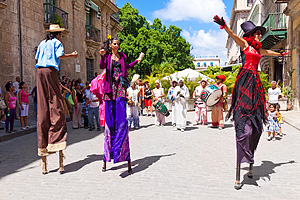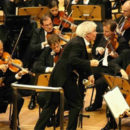
5 magical castles, from Germany to Romania
Castles were always present in our good night stories since forever and some of us still love to portrayal its inhabitants. However, with few exceptions, castles are nowadays turned in museums and historical landmarks, reminding of a noble family’s power and prestige. We highlight below five of the most beautiful edifices around the world that should be considered for your travel wish list.
Neuschwanstein Castle – Bavaria, Germany

Neuschwanstein Castle, Germany. Photo via Wikimedia Commons.
The castle that inspired Walt Disney was built by former King Ludwig II of Bavaria, who lost his kingdom after the Austro-Prussian War, in 1866. In 1868, he wrote to a friend that he found the perfect place to built his residence “in the authentic style of the old German knights’ castles”.
Hohenwerfen Castle – Werfen, Austria

Hohenwerfen Castle, Austria. Photo via Wikimedia Commons.
Located above the town of Werfen, approximately 40 kilometers away from Salzburg, Hohenwerfen was used as a hunting retreat and residence from the 16th to 20th centuries, as a prison in the 17th and 18th centuries, as a military training center under Nazi occupation, and by local police until 1987. It was built in 1077 by Archbishop Gebhard of Salzburg, who needed protection during the investiture controversy, a major conflict between church and state that led to nearly half a century of civil war in Germany.
Hearst Castle – San Simeon, California, USA
A more nonconformist castle is that of the Gilded Age newspaper baron William Randolph Hearst, who commissioned architect Julia Morgan—the first woman to earn a certificate in architecture from Paris’s École des Beaux-Arts—to build him a home with the grandeur of a European palace. Hearst Castle is also home to a vast collection of European Old Master paintings and sculptures, Greco-Roman antiquities, and decorative arts.
Himeji Castle – Hyōgo Prefecture, Japan

Himeji Castle, Japan. Photo via Wikimedia Commons.
Himeji Castle is both a national treasure and a UNESCO world heritage site, as the most exquisite surviving example from the early 17th-century Japanese castle architecture of the feudal period. Named “White Heron Castle” for its graceful design, which resembles a bird poised for flight, the castle is a masterpiece of wood construction and encapsulates the Japanese concept of harmony between humanity and nature. It functioned as a fortification against local shoguns and is placed alongside the path to Kyoto.
Bran Castle – Bran, Romania

Bran Castle, Romania. Photo via Wikimedia Commons.
Built between 1377 and 1388, Bran Castle is famous for inspiring Bram Stoker’s book, Dracula (1897), as the only structure in Transylvania to fit his description of a castle “on the very edge of a terrific precipice…with occasionally a deep rift where there is a chasm [with] silver threads where the rivers wind in deep gorges through the forests”. However, it is now a museum dedicated to Queen Mary of Romania, which spend a lot of her reign there.










